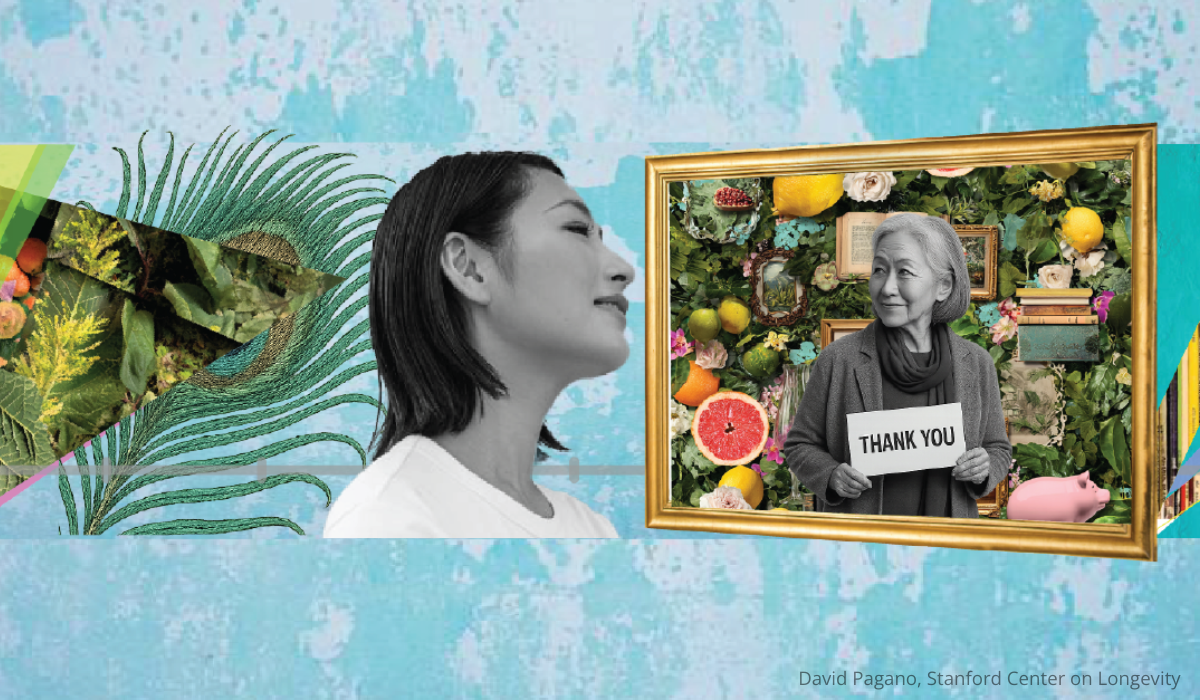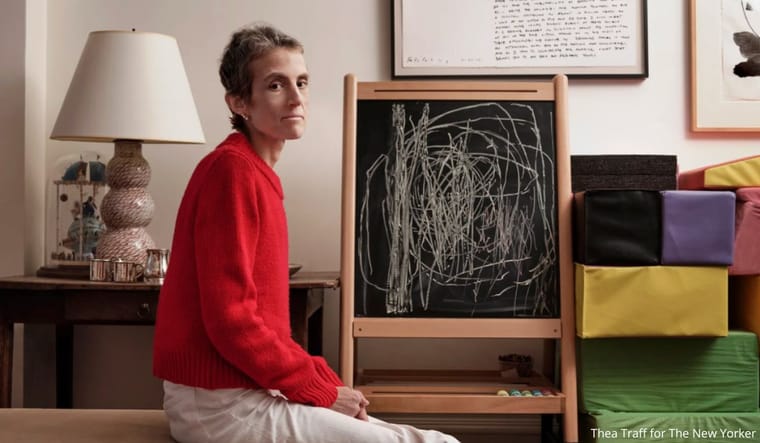The Power of Investing in the Older You

First published in SCL Magazine, from the Stanford Center on Longevity.
What comes to mind when you imagine yourself growing old?
For many of us, it’s hard to avoid thoughts of frailty and gray hair, memory loss, and other conventional markers of old age. But what if there were a strategy that could shift that stereotypical path of decline toward a healthier, happier outcome—and what if this radical method wasn’t focused on eternal youth, but rather … connecting to an older version of yourself?
This is the thesis of Hal Hershfield’s book Your Future Self: How to Make Tomorrow Better Today. By visualizing the person you’ll be in years to come, his research shows, you’re more likely to make wiser choices now—about your health, your finances, your quality of life—that could change the trajectory of your life for the long term.
For decades, scientists have struggled to understand a certain type of undertow in the human psyche. Why do most people tend to overvalue what they want or need in the present, even at the expense of a better outcome in the future—a phenomenon known as present bias? Think: sleeping in versus getting up early to hit the gym or splurging on a trip when your 401(k) could use some love.
Hershfield, a professor of marketing, behavioral decision-making, and psychology at UCLA’s Anderson School of Management, draws from a range of disciplines to show that becoming more connected to your future self—for example, by viewing or interacting with digital images of the older you—is a powerful antidote to that present bias. This phenomenon has profound implications for the field of longevity.
“The beauty of modern science and medical advancements is that we’re living longer, and the downside is that we’re living longer,” says Hershfield. “Those extra years create a need for changing our lifestyle and our behaviors, now, to increase not just lifespan, but healthspan,” he adds. “And I love that phrase, ‘joyspan,’ as well.” Hershfield’s research shows that when people learn to envision and want the best for their future selves, they make better choices in the present and those efforts can pave the road to a richer, more resilient life.
Stranger Danger
As a psychology graduate student at Stanford, Hershfield’s work primarily focused on retirement savings and related behaviors—an area where many people are notoriously reluctant to set aside present needs for their future security. He was intrigued by a line of inquiry in philosophy and economics, which asked whether people’s choices were driven by a desire for monetary rewards now versus later, or a lack of connection between their present and future selves.
“In a way, we imagine our future selves as strangers,” Hershfield says, “As a result, we don’t really take that person’s needs into consideration when we make decisions in the present.”
The strategy that helped people make more future-aware financial decisions? “Meeting” and/or interacting with an older version of themselves via age-progressed computer images or virtual reality avatars. In a study Hershfield published in 2011—one of many with similar results—he found that people who encountered an older self were motivated to save significantly more for retirement than those who didn’t. While that study was based on hypothetical financial decisions, Hershfield later achieved similar results in a real-world experiment, where bank customers who “met” their future selves were also likely to increase their retirement savings.
More broadly, age-progression technology has also been shown to be a valuable tool for promoting financial literacy and motivating young people to save for retirement—a testament to the motivational power of visualizing a future self.
Hershfield recalled a pivotal moment with one of his mentors, Stanford psychologist and professor Lee Ross: “I remember him saying, ‘This is not just about financial decision-making. This is so much more. Any of these sorts of present-future trade-offs apply to health decisions, eating decisions, ethical decisions, environmental decisions, even time decisions.’”
Investing in the Future, Now
As Hershfield explores in Your Future Self, Ross’s insight proved prescient: When people visualize or encounter an older version of themselves—or connect more deeply, say, by writing a letter to that future self—it helps them shift their choices across a number of domains, including saving more, eating well, losing weight, exercising, avoiding risky behavior, and more.
One important motivating factor is being able to visualize what we may look like years or even decades from now. Advances in artificial intelligence imaging technology are making that experience increasingly realistic, says Anna Pot, a postdoctoral scholar in the Lifespan Development Lab in the Stanford Department of Psychology. “AI technology is advancing to the point that it’s more fine-grained,” says Pot. In other words, “thanks to advances in AI imaging technology, you’re more likely to recognize an older digital you, as you.”
The implications for behavioral science, specifically for how people can improve their quality of life as they age, could be seismic. The work of Hershfield and others suggests that it’s time to view longevity—and our relationship with our future selves—as a multidimensional investment. Just as an investor creates a portfolio with an eye toward long-term growth, future self-awareness can help us make choices that pay dividends for aging well.
Not that any of this is simple, as Hershfield is quick to point out. Seeing your future self can have an impact, but the context matters, he says. A single visualization can help with immediate choices, like deciding to fund a retirement account or hiring a personal trainer. Eating healthier or maintaining a new habit takes some muscle, he says. Sustained actions are what’s really hard.
To inspire better, smarter choices over the long haul, it helps to employ more than one strategy, Hershfield says. Writing a letter to your future self is one tool that studies show can have a positive impact on how people behave and the choices they make (exercising more, for example). For example, FutureMe, an interactive website, reports it has inspired millions of people to write letters to their future selves.
Hershfield helped create Future You, a digital-aging and chatbot project developed by UCLA, the MIT Media Lab, Harvard, and other organizations. The site not only provides users with an age-progressed image of themselves, people can then chat by text with that AI-generated simulation of who they might be at 60 or 80 years old based on their answers to various age-related and life-fulfillment questions (see “Mirror, Mirror …”).
What does it mean to chat with an AI bot that looks like an older version of you and has been primed to “know” you, to a degree? Researchers posit that you need these additional points of contact with Future You, because—plot twist—Future You is going to change as life unfolds. And yet there is also a degree of self-continuity: the notion that there is a fundamental you that exists throughout time. The Future You experience is a means to understand one’s present self (and behavior) as much as one’s future self (with all its aspirations and fears). And thus, investing in that older you is valuable.
“This whole idea can be puzzling at first,” Hershfield says, “but it can also mean possibilities.”
“We can change and become more of ourselves. We can grow into the people we are at the core. And I think that’s also hopeful and optimistic.”
Please note that we may receive affiliate commissions from the sales of linked products.



